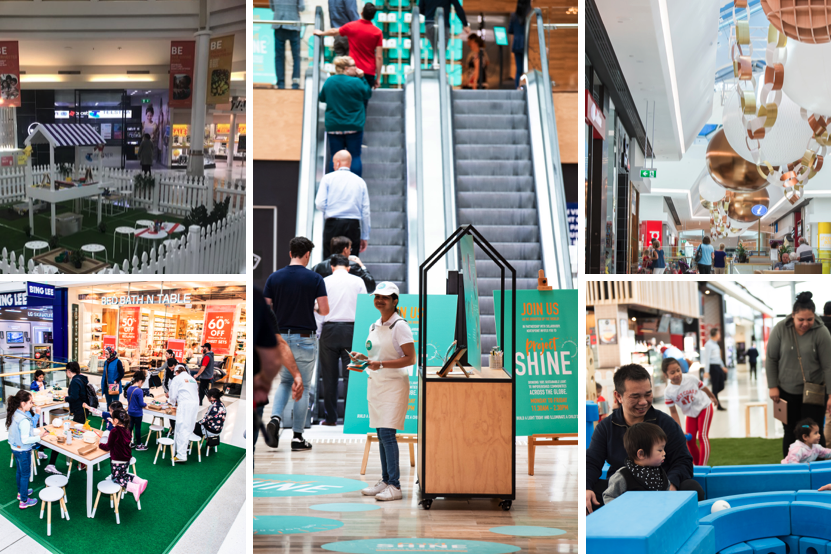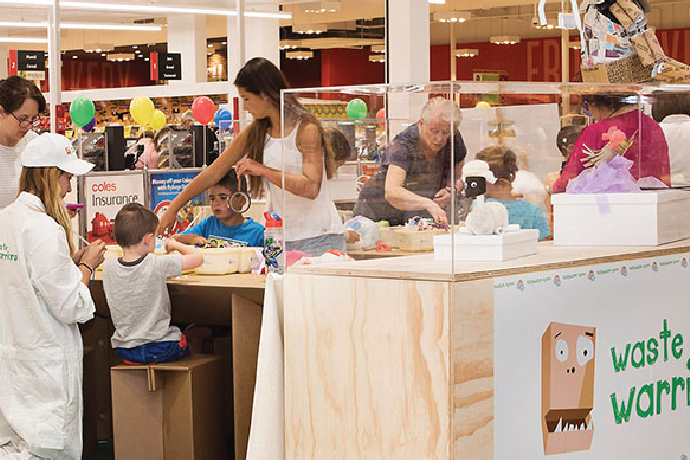Brand Activations
Driving Shopping Centre Foot Traffic: Local Communities at the Centre of the Mall
“The merchant has always been and will always be most successful where his activity is integrated with the widest possible palette of human experiences and urban expressions – ”Victor Gruen
It is every retailer and Centre-owner’s goal to increase shopping Centre revenue. A clear way to achieve this goal is by increasing the number of customers that walk through the Centre’s door. This is called foot-traffic and is a recognised retail indicator that determines a shopping Centre’s success.
Having high shopping Centre traffic means more sales and opportunities and greater chances to create consumer engagement. Foot-traffic can provide useful insights to retailers. It can also be used to evaluate the strength of the marketing tactics, help retailers find ways to increase productivity but also create ways to boost consumer engagement.
Yet, in recent years, Australian retailers have been experiencing periods of significantly low foot-traffic. Many economists would say this is due to the rise of e-commerce stores, offshore retailers and digital technologies.
Nonetheless, there is good news in all of this as there are many ways to increase shopping Centre foot-traffic. One of our creative strategies consists of increasing community engagement and making the shopping Centre a destination for locals and neighbouring resident to engage in shopping Centre activities.
Shopping Centres are the heart of every community. This is the reason why we live and breathe activations. We design campaigns that will always best represent the audience’s values and interests. This is why following shopping Centre trends and finding out how our communities are evolving have become an important aspect to our activations and campaigns.

“Centres have become a place where consumers can go to be educated, inspired, entertained and seek cultural experiences”
The evolving nature of shopping Centres
Shopping Centres have diversified their services and have managed to attract unique tenants. Their role has changed and so have the amenities and services they provide to consumers – health and fitness, playgrounds, libraries, theatres, fine dining, places of worships and child-care have all entered the shopping Centre game.
“Centres have become a place where consumers can go to be educated, inspired, entertained and seek cultural experiences”
Shopping Centres aren’t just a place for selling and conducting transactions but a space where cultural and community-oriented services can coexist and complement alongside other retail stores. Successful retail establishments have managed to attract consumers who not only visit the Centre to purchase specific items but also visit the Centre for the other services that they offer. This means consumers are going to Centres not because they necessarily have to but mostly because they want to.
This indicates that foot-traffic and the number of customers in a retail environment have become dependent on the level of engagement that the Centre has managed to create. – And Activations might just be a solution to the existing foot-traffic problem…
Activations: the next generation of shopping Centre engagement
The shopping Centre plays a great role for local residents. In many ways, shopping Centres act as community Centres as well. In 2018 alone, 700 community-oriented events were in Australian shopping Centres. This is the proof that shopping Centres have become an ideal location for neighbouring residents to engage in activities and events that could benefit the community. Topics such as culture, environmental concerns and sustainability are prevailing in our communities. It would only seem natural to hold events and activities that would incorporate these types of subjects.
“Our Waste Warriors Initiative is proof that many communities are engaging in the sustainability movement”
Waste Warriors is a kid environmental educational initiative that has been created by our team to promote community engagement during the school holiday period. It offers a complete activation solution, which includes sustainable workshops and other learning and educational materials that inspires creativity and thinking.

“Our Waste Warriors Initiative is proof that many communities are engaging in the sustainability movement”
Our Waste Warrior initiative campaign aimed to increase shopping Centre foot-traffic, drive repeat visitors and encourage dwell-time and was customised for each and individual client. Waste Warrior is an ongoing initiative and will continue throughout the year and will be making a comeback shortly. This year we are expecting thousands of proud, brave and innovative little warriors.
For more information on Waste Warrior visit
https://www.engageatdisegno.com.au/projects/waste-warriors-are-here2/
Reinventing the Wheel of Activations
According to surveys conducted by Relationship Australia, neighbouring residents are becoming attached to their local communities. This indicates that more and more locals are envisioning the type of community they want to live in and are shaping and moulding it throughout various stages of its growth. More and more locals are engaging in economic activities that will strengthen their community and are choosing to shop locally.
“Localism has definitely impacted on how residents work, live and…shop”
Localism can be described as a person’s preference to choose their local community. This means that many individuals prefer to shop, work and live within their own community. Localism and other developing trends in communities have changed the way shopping Centre activities are perceived. While shopping Centres remain a destination for retail and transactions, it is the communities that will most likely influence the type of services and complementary activities offered.
For our team at ENGAGE, it’s all about creating campaigns that lead to further consumer engagement. We understand that in a retail and shopping Centre environment, consumers are searching for social interactions and opportunities to connect with other members of their community. Communities will continue to evolve, as will the shopping Centre and our need to further design fitting activations.

